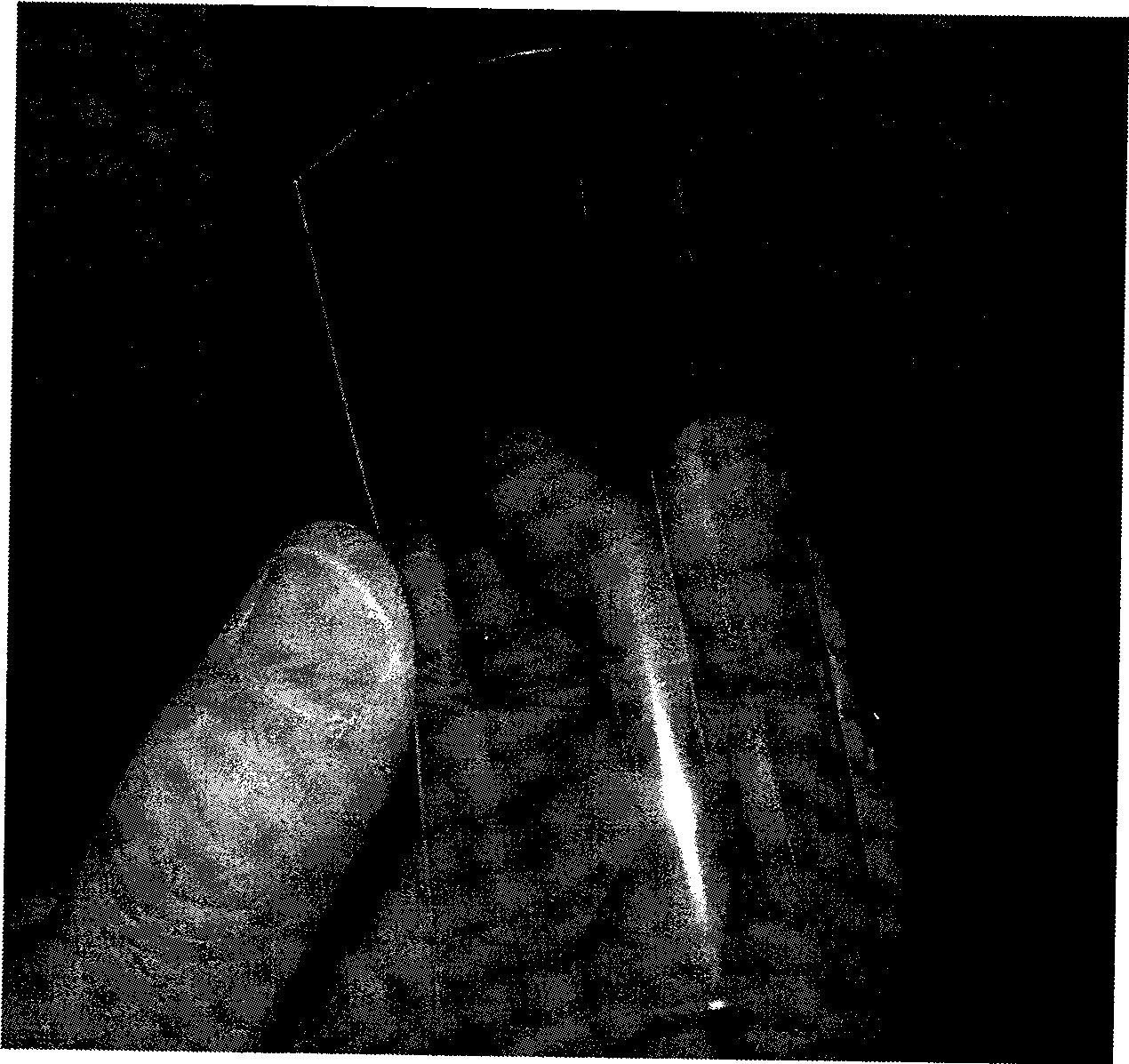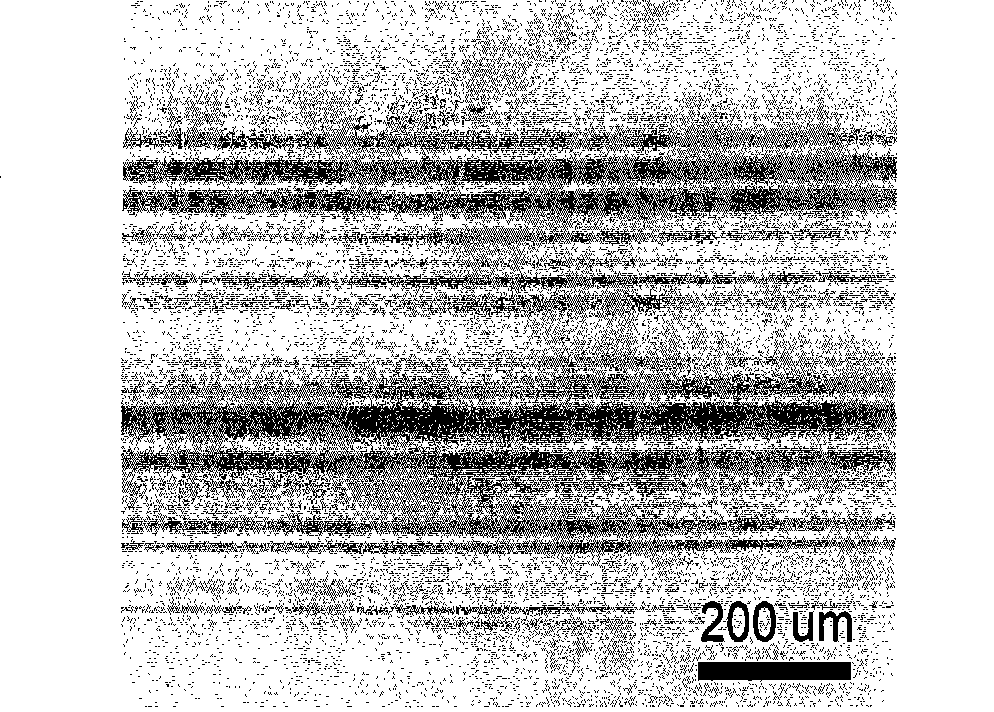Light curing nano composite coating
A nano-composite and light-curing technology, applied in the direction of coating, etc., can solve the problems of low addition of inorganic nanoparticles, large specific surface area of nanoparticles, and difficulty in uniform dispersion, etc., to achieve anti-ultraviolet and aging resistance, flexibility and transparency High, fast curing effect
- Summary
- Abstract
- Description
- Claims
- Application Information
AI Technical Summary
Problems solved by technology
Method used
Image
Examples
Embodiment 1-4
[0073] Inorganic nano-SiO 2 The particles were introduced into trimethylolpropane triacrylate by sol-gel method to obtain different contents of inorganic nano-SiO 2 granular masterbatch;
[0074] Inorganic nano-SiO obtained above 2 The particle masterbatch is mixed with prepolymer urethane acrylate and diluent trimethylolpropane triacrylate respectively to adjust the ratio; then add a certain amount of photoinitiator (1-hydroxycyclohexyl acetophenone), coating aid Agent (leveling agent fluorocarbon modified polyacrylate EFKA-3777, defoamer fluorocarbon modified polyacrylate EFKA-2722) adjustment.
[0075] At 25° C., magnetically stirred for 12 hours, mixed uniformly, and vacuum exhausted for 12 hours to prepare the light-curable nanocomposite coating of this example. Afterwards, the photocurable nanocomposite coating of this embodiment was used to form a film on polycarbonate by spin coating (rotating speed 2000-5000rpm), and the performance test was carried out; the test r...
Embodiment 5-8
[0081] Preparation of SiO with different contents by combining sol-gel method and mechanical blending 2 Nanocomposite acrylate masterbatch (nanoparticles include in-situ dispersion and mechanical dispersion).
[0082] The above SiO 2 Nanocomposite acrylate masterbatch is mixed with prepolymer (polyurethane acrylate), diluent (trimethylolpropane triacrylate or 1,6-hexanediol diacrylate), photoinitiator (1-hydroxycyclohexyl Acetophenone or benzil ketal) mixed according to a certain ratio; finally add a certain amount of coating additives (leveling agent: fluorocarbon modified polyacrylate EFKA-3777, defoamer: fluorocarbon modified polyacrylic acid ester EFKA-2722) and solvent (tetrahydrofuran or ethyl acetate).
[0083] At 25° C., magnetically stirred for 12 hours, mixed uniformly, and vacuum exhausted for 12 hours to prepare the light-curable nanocomposite coating of this example. Form a film on polycarbonate by spin coating (rotating speed 2000-5000rpm), and perform perform...
Embodiment 9-14
[0090] Combining the sol-gel method and the mechanical blending method, the inorganic nano-SiO 2 The particles were introduced into the acrylate by the sol-gel method; then the ZnO, TiO 2 , CaCO 3 or Al 2 o 3 Nanoparticles are dispersed in a mixture of 1,6-hexanediol diacrylate, tripropylene glycol diacrylate and trimethylolpropane triacrylate to prepare nanocomposite acrylate masterbatches (nanoparticles) with different contents Including in-situ dispersion and mechanical dispersion).
[0091] The above nanocomposite acrylate masterbatch, prepolymer (epoxy acrylate, polyether acrylate, polyurethane acrylate or a mixture of several prepolymers), diluent (1,6-hexanediol diacrylic acid ester, tripropylene glycol diacrylate, trimethylolpropane triacrylate or a mixture of several acrylates), initiators (benzil ketal, α, α-dimethyl-α-hydroxyphenyl ethyl Ketone, 1-hydroxycyclohexyl acetophenone or a mixture of several), coating additives (leveling agent: fluorocarbon modified p...
PUM
 Login to View More
Login to View More Abstract
Description
Claims
Application Information
 Login to View More
Login to View More - R&D
- Intellectual Property
- Life Sciences
- Materials
- Tech Scout
- Unparalleled Data Quality
- Higher Quality Content
- 60% Fewer Hallucinations
Browse by: Latest US Patents, China's latest patents, Technical Efficacy Thesaurus, Application Domain, Technology Topic, Popular Technical Reports.
© 2025 PatSnap. All rights reserved.Legal|Privacy policy|Modern Slavery Act Transparency Statement|Sitemap|About US| Contact US: help@patsnap.com



